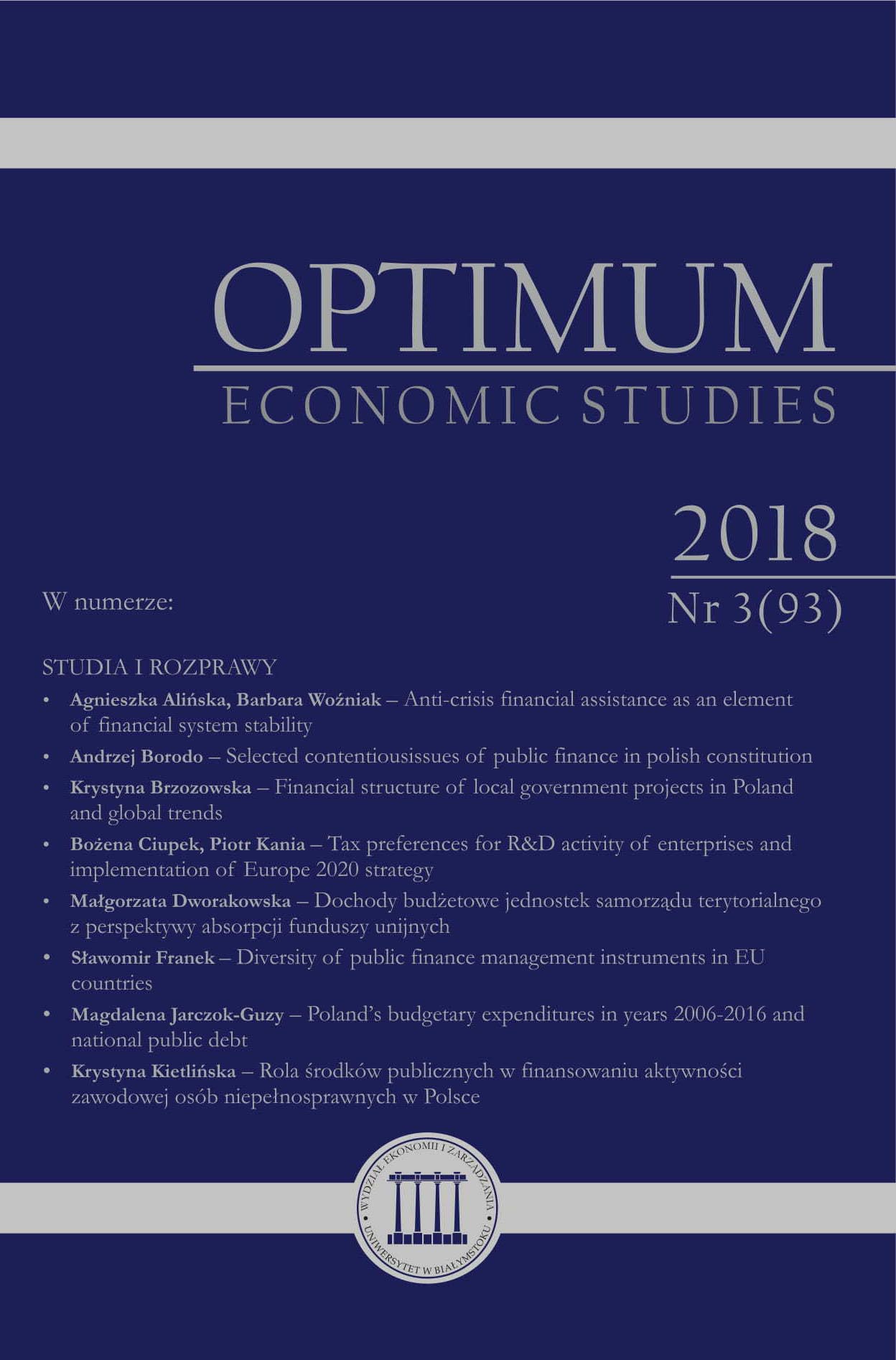Impact of performance budgeting on the structure of expenditure
Impact of performance budgeting on the structure of expenditure
the experiences of euro area countries
Author(s): Marta PostułaSubject(s): Social Sciences, National Economy, Public Finances
Published by: Wydawnictwo Uniwersytetu w Białymstoku
Keywords: public spending; performance budgeting; fiscal adjustment; public services
Summary/Abstract: Goal – The aim of the paper is to assess to what degree the advancement in the implementation ofinstruments from the area of the so-called performance budgeting contributes to the rationalmanagement of public expenditure structure.Research methodology – Qualitative research based on descriptive analysis using extensive subjectliterature (chiefly foreign) composed of monographs, journals, scientific studies, and reports ofinternational institutions helps the author solve research problems and achieve the paper’s objective.Among the methods used are also deductive and inductive reasoning, and comparative analysis. Qualitativestudies employ the method of systemizing statistical information, based on analysis of referencestatistical data, and the methodology of statistical dependence.Score – The research results show that irrespective of the detailed legal provisions introduced atthe EU level under the modified Stability and Growth Pact, the decisions regarding the structure ofexpenditures are made on the basis of election platforms. The structure of expenditures cannot bemodelled because it depends on the political decisions made in individual countries. Additionally, noimpact of performance budgeting on the structure of expenditures in the euro area countries has beenfound. The two identified groups-spending on defense and housing policy – are rigid expenditures andcannot be part of fiscal consolidation in the short term.Uniqueness/value – Not only does the paper discuss concepts related to the models of contemporaryeconomic processes, but it also contributes to the debate on the extent of state interference inthe sector of financial institutions in the global economy. The conducted research is an original attemptto explain the mechanism of the analysed phenomenon and to illustrate its progress in the changingeconomic environment.
Journal: Optimum. Economic Studies
- Issue Year: 93/2018
- Issue No: 3
- Page Range: 143-158
- Page Count: 16
- Language: English

